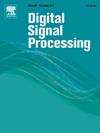A lightweight underwater object detection with enhanced detail and edge-aware feature fusion
IF 2.9
3区 工程技术
Q2 ENGINEERING, ELECTRICAL & ELECTRONIC
引用次数: 0
Abstract
Underwater object detection often encounters challenges such as variable target scale, complex backgrounds, blurred object edges, and image distortion. In response to these challenges, a lightweight detection algorithm, EDFF-YOLO (Edge Detail Feature Fusion YOLO), is designed to enhance detection performance under these adverse conditions. To enhance the capability of the network to extract global features from images, a multi-scale residual enhancement module has been developed. This module captures and fuses a broader range of multi-scale contextual information. Secondly, a hybrid feature fusion module is proposed, which enhances the effectiveness of feature representation by using the hybrid local channel attention mechanism and element-wise operations to guide and fuse features. Then, a lightweight edge extraction block is designed to extract both edge and spatial information of the image, enriching feature diversity. Finally, the shared detail enhancement detection head is used to improve the ability of the detection head to capture details and to reduce the number of parameters and computational load of the algorithm. The experimental results reveal that the proposed algorithm outperforms the YOLOv8s baseline algorithm on the RUOD dataset. It demonstrates a reduction of 18 % and 30 % in both the number of parameters and computational load, respectively. Additionally, the [email protected] increases by 0.4 % to reach 88.1 %, surpassing the performance of other tested algorithms.
一种轻量级的水下目标检测,增强了细节和边缘感知特征融合
水下目标检测经常面临目标尺度多变、背景复杂、目标边缘模糊、图像失真等问题。为了应对这些挑战,设计了一种轻量级检测算法EDFF-YOLO(边缘细节特征融合YOLO),以提高在这些不利条件下的检测性能。为了提高网络提取图像全局特征的能力,开发了多尺度残差增强模块。该模块捕获并融合更广泛的多尺度上下文信息。其次,提出了混合特征融合模块,利用混合局部通道关注机制和元素操作来引导和融合特征,提高了特征表示的有效性;然后,设计轻量级的边缘提取块,同时提取图像的边缘和空间信息,丰富特征的多样性。最后,采用共享细节增强检测头,提高了检测头捕获细节的能力,减少了算法的参数数量和计算量。实验结果表明,该算法在RUOD数据集上优于YOLOv8s基线算法。结果表明,在参数数量和计算负荷方面分别减少了18%和30%。此外,[email protected]提高了0.4%,达到88.1%,超过了其他测试算法的性能。
本文章由计算机程序翻译,如有差异,请以英文原文为准。
求助全文
约1分钟内获得全文
求助全文
来源期刊

Digital Signal Processing
工程技术-工程:电子与电气
CiteScore
5.30
自引率
17.20%
发文量
435
审稿时长
66 days
期刊介绍:
Digital Signal Processing: A Review Journal is one of the oldest and most established journals in the field of signal processing yet it aims to be the most innovative. The Journal invites top quality research articles at the frontiers of research in all aspects of signal processing. Our objective is to provide a platform for the publication of ground-breaking research in signal processing with both academic and industrial appeal.
The journal has a special emphasis on statistical signal processing methodology such as Bayesian signal processing, and encourages articles on emerging applications of signal processing such as:
• big data• machine learning• internet of things• information security• systems biology and computational biology,• financial time series analysis,• autonomous vehicles,• quantum computing,• neuromorphic engineering,• human-computer interaction and intelligent user interfaces,• environmental signal processing,• geophysical signal processing including seismic signal processing,• chemioinformatics and bioinformatics,• audio, visual and performance arts,• disaster management and prevention,• renewable energy,
 求助内容:
求助内容: 应助结果提醒方式:
应助结果提醒方式:


